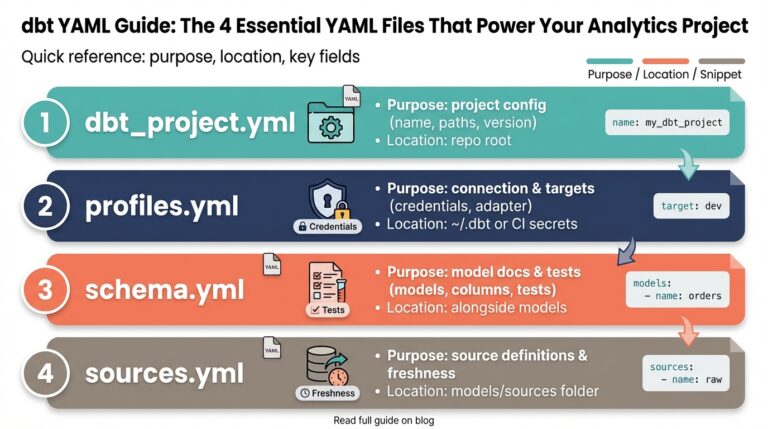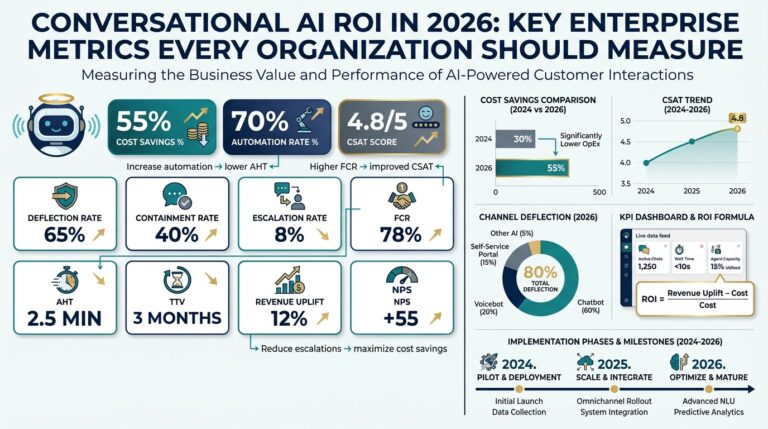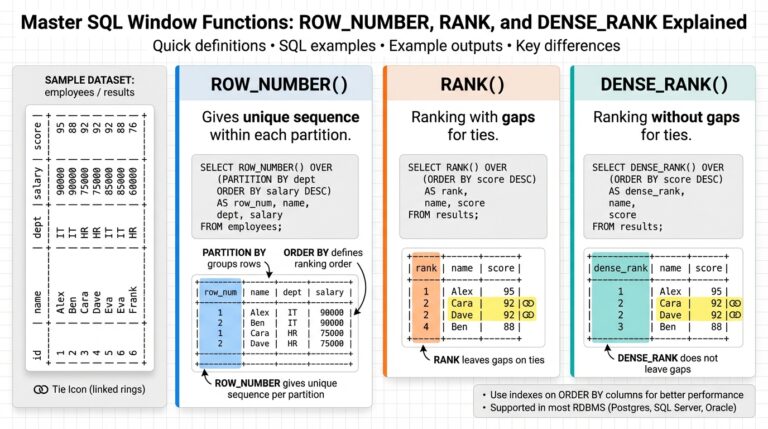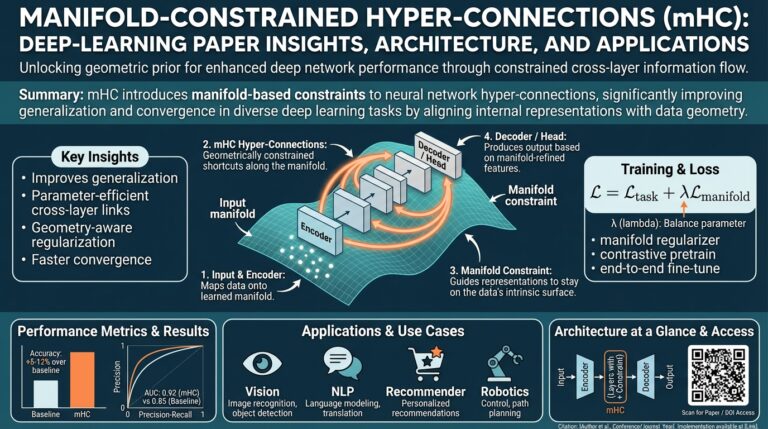The Hype vs. Reality of Voice AI in Real-World Use
Voice AI has captured the imagination of businesses and consumers alike, promising seamless, hands-free interactions and next-level accessibility. However, the journey from a promising demo to a robust, production-ready solution is often fraught with obstacles. Why does the reality frequently fall short of the hype, especially when voice agents face the messy world beyond the lab?
The hype around voice AI is largely fueled by rapid advancements in machine learning, natural language processing (NLP), and cloud computing. High-profile successes, such as Google Assistant and Amazon Alexa, have set high expectations for what voice technology can achieve. Demos highlight impressive conversational capabilities and near-perfect understanding in controlled settings, leading stakeholders to believe that launching a sophisticated voice AI agent is simply a matter of scaling up.
In reality, deploying voice AI in the real world presents a unique set of challenges that often go overlooked. Unlike the quiet environments and well-scripted queries of development and testing, production environments are unpredictable and diverse. Users speak with different accents, use slang, interrupt themselves, and interact from noisy backgrounds like busy streets or open-plan offices. This variance significantly increases error rates, with research from Harvard Data Science Review noting that word error rates for voice assistants can more than double in challenging acoustic settings.
Beyond environmental hurdles, real-world use uncovers deeper issues with intent recognition and context handling. Voice agents often fail not because users make mistakes, but because they expect the AI to handle conversation as a human would—contextually, flexibly, and with memory of previous turns. When an agent falters, users are left frustrated, potentially abandoning the system altogether. The gap between user expectations and technical limitations widens, despite companies’ ambitious marketing claims, as discussed in recent industry analysis by VentureBeat.
The disconnect between hype and reality stems from several root causes:
- Data Quality and Coverage: Training data often lacks the diversity to reflect real-world use, leading to failure when an agent encounters accents, dialects, or colloquial expressions not seen before.
- Environment Adaptability: Voice AIs built in noise-free labs often struggle with echo, crosstalk, and background sounds that are common in actual deployment scenarios.
- Overpromising Capabilities: Overzealous marketing sets unrealistic expectations, causing disappointment when users discover the system’s limitations in complex, multi-turn conversations.
To bridge this gap, successful voice AI requires a multi-pronged approach: collecting diverse datasets, optimizing for noisy environments, continuously learning from real user interactions, and setting realistic expectations through transparent communication. Companies like Meta and DeepMind are advancing research in this direction, paving the way for more resilient and trustworthy voice solutions.
Ultimately, understanding the difference between polished demos and production realities is the first step toward building voice AI that genuinely works for everyone, everywhere.
Common Pitfalls: Why Most Voice AI Agents Fall Short
Many businesses are eager to implement voice AI agents, but the reality is that a significant number of these projects never deliver their intended value once they reach production environments. Understanding the most common pitfalls can help organizations sidestep these issues and make more informed decisions during development and deployment.
1. Poorly Defined Use Cases and Objectives
A frequent mistake is jumping into voice AI development without a thorough understanding of the user’s actual needs or the business problem to be solved. When objectives are vague, the AI agent tends to have limited utility and scalability. For instance, a customer support voice bot designed without clear goals can end up frustrating users with irrelevant answers or lack of functionality. Successful implementation should begin with a detailed analysis of use cases, followed by defining success metrics. For more on goal-oriented design, see this Harvard Business Review article on strategic AI adoption.
2. Limited Training Data and Inadequate Testing
Many voice agents are trained on data sets that are too small or not diverse enough, leading to agents that perform well in laboratory settings but fail in real-world interactions. A robust voice AI needs exposure to a broad range of accents, noise conditions, and user intents. Best practices include gathering data from customer calls, open-sourcing diverse voice data, and continuously retraining the model post-launch. As highlighted in Google AI’s research, extensive and ongoing data collection is key to model resiliency and accuracy.
3. Ignoring Edge Cases and Conversation Complexity
Voice conversations are inherently unpredictable, filled with interruptions, slang, or out-of-domain requests. Many systems break down when user behavior deviates even slightly from training scenarios. Intelligent agents must accommodate digressions, ambiguous queries, and contextual nuances. For example, a well-built agent will ask clarifying questions or gracefully handle unknown requests rather than just repeating a set script. This adaptability is discussed in more detail by MIT’s research on conversational robustness.
4. Underestimating Integration Complexity
Effective voice AI agents rarely work as standalone products. Success in production requires seamless integration with existing business systems—such as CRM, databases, and help desk software—to retrieve relevant information and execute tasks. Many failures arise from overlooking the technical and strategic work needed to integrate these elements securely and reliably, as discussed in this Gartner report on enterprise voice solutions. Teams must plan for infrastructure compatibility, API limits, and data privacy from the outset.
5. Lack of Iterative Monitoring and Improvement
Once a voice AI agent is live, maintaining its performance is an ongoing task. Many organizations deploy agents and fail to monitor them rigorously, leading to stagnation and user frustration as real-world language use evolves. High-performing teams track conversation analytics, collect user feedback, and regularly update intent libraries. A continuous improvement cycle ensures the system remains effective and aligned with user needs, as illustrated by best practices from NVIDIA’s AI voice technology guidelines.
By addressing these pitfalls at each stage of development and deployment, organizations can dramatically improve their chances of building reliable and useful voice AI agents that thrive in real-world production environments.
Critical Technical Barriers in Voice AI Deployment
One of the primary challenges in deploying voice AI agents at scale is the complexity of ensuring accurate speech recognition across a diverse user base. Speech recognition systems often falter due to variations in accents, background noise, and colloquial language. Research published by Nature points out that many speech-to-text models struggle with non-native accents, leading to frustrating user experiences and high error rates. To mitigate this, data collection efforts must encompass a broad spectrum of voices and environments, and iterative model retraining should include real-world audio samples from end-users.
An equally critical barrier lies in handling real-time conversation. Unlike text-based chatbots, voice agents must process, understand, and respond within milliseconds to maintain a natural conversational flow. Latency, often introduced by slow processing or inefficient pipeline architectures, can break the illusion of a human-like conversational agent. To address this, organizations should prioritize low-latency models and robust infrastructure, such as utilizing streaming inference techniques and edge computing when possible. Establishing parallel processing for speech recognition and natural language understanding (NLU) can further streamline responses.
Integration with legacy systems poses yet another hurdle. Real-world deployments require voice AI to connect with existing databases, customer management platforms, and support tools. Inflexible APIs, lack of standardized protocols, and privacy concerns make integrations challenging. It’s crucial for technical teams to follow industry best practices, such as employing well-documented APIs and robust authentication layers, to allow for secure and scalable connectivity. Example: an AI-powered virtual assistant for a bank must reliably and securely access user transaction data and account management tools, often governed by strict compliance rules.
Security and privacy remain paramount, especially as sensitive data is routinely handled by voice agents: think healthcare inquiries or financial information. Breaches or mishandling of data can undermine user trust and attract regulatory scrutiny. Developers should implement encrypted data transmission and follow frameworks such as the ISO/IEC 27001 standard for information security, ensuring rigorous access control, storage policies, and regular audits.
Finally, continuous monitoring and improvement are often neglected. High-performing voice AI systems rely on detailed post-launch analytics. Monitoring user interactions, tracking fallbacks and user drop-off points, and proactive issue identification allow teams to fine-tune conversational flows and improve intent recognition. Steps include regularly reviewing anonymized transcripts, setting up alerting for unusual error spikes, and deploying automated updates as new user patterns emerge.
Each of these technological hurdles—ranging from speech recognition and latency, to integration and data security—requires thoughtful planning, ongoing iteration, and collaboration across diverse technical teams. By addressing these barriers head-on, organizations can drastically improve the success rate of voice AI agents in real-world use cases.
The Role of User Experience in Long-Term Adoption
User experience (UX) is the linchpin that determines whether a voice AI agent will merely impress in a demo or sustain engagement and retention in real-world use. While technical accuracy is crucial, the nuance of how users interact with these systems plays an equally critical—and often underestimated—role. A voice AI agent that fails to deliver a seamless, intuitive, and positive interaction will likely see abandonment, no matter how advanced its backend. Here’s a deep dive into why UX is central to the long-term adoption of voice AI and actionable steps to ensure your agent thrives in production environments.
Understanding User Expectations and Context
Users come to voice interfaces with mental models shaped by human conversation and interactions with other technology. They expect fluid, fast, and contextually aware exchanges. If the AI doesn’t interpret intent accurately or requires users to repeat themselves, frustration grows quickly. Nielsen Norman Group, a leader in usability research, highlights that forgiving user errors, providing suggestions, and maintaining conversational context are crucial aspects of UX for voice interfaces.
- Action: Conduct user testing early and often to understand pain points and unmet needs in real usage contexts. Regularly update your AI based on actual user behavior and feedback, not just technical metrics.
- Example: Smart speakers that fail to recognize regional accents or dialects can alienate users. Incorporate diverse datasets to make recognition more inclusive and robust.
Designing for Transparency and Trust
User trust is foundational, especially as people reveal increasingly personal information to voice agents. Users want to know what the AI can do, what it cannot, and how their data is used. A lack of transparency erodes confidence and hinders adoption. According to MIT Sloan Management Review, clear explanations of AI processes and visible control over personal data are key to fostering trust.
- Step 1: Implement voice prompts that clarify what actions are possible at each juncture.
- Step 2: Offer opt-in and opt-out features for data collection and processing, and communicate these options in simple language.
- Step 3: Regularly remind users how their privacy is protected—making terms transparent builds long-term relationships.
Reducing Friction Through Seamless Interactions
Every second of unnecessary friction—be it confusion, long pauses, or back-and-forth to achieve simple tasks—impacts a user’s willingness to adopt or recommend a voice AI agent. Google’s research into conversational agents demonstrates that agents with natural turn-taking, interruptions handling, and proactive clarification outperform those that rely on rigid, scripted flows.
- Step 1: Allow users to interrupt or change course as naturally as they would in human conversation. This helps them feel in control and respected.
- Step 2: Provide multimodal support where possible—let users interact via both voice and fallback visual/text cues. This is particularly vital in noisy or private environments.
- Step 3: Employ error recovery strategies, such as suggesting alternatives or guiding users back on track if misunderstandings occur, instead of ending interactions abruptly.
Continual Improvement Based on Real-World Data
Total long-term adoption depends on an AI agent’s adaptability in the face of evolving user needs and environments. As the context in which users deploy voice assistants changes—think new languages, tasks, locations—the system must improve constantly. Industry leaders often use comprehensive user feedback loops to constantly refine their agents.
- Action: Monitor how users interact with your agent in production through analytics and sentiment analysis. Promptly address popular pain points, and don’t be afraid to sunset features that aren’t resonating.
- Example: If many users attempt a command the AI doesn’t recognize, consider it a candidate for the next feature release.
Ultimately, ensuring user experience is not an afterthought but a foundational element of your voice AI design process is the surest way to drive sustainable user adoption. Focusing on real-world usability, trust, low friction, and constant improvement transforms voice AI agents from fleeting novelties into indispensable daily tools.
Proactive Strategies for Building Robust Voice AI Agents
Building robust voice AI agents requires more than just advanced technology—it demands a comprehensive, proactive approach that addresses the unique challenges of real-world environments. Below are key strategies that can help teams create voice AI solutions that not only survive but thrive in production settings.
Understand and Address Real-World Audio Complexity
Voice AI agents often fail when they encounter audio inputs outside of clean, controlled conditions. In actual deployments, users may speak with heavy accents, in noisy environments, or use colloquial language.
- Dataset Diversity: Proactively build or source training datasets representing a wide range of acoustic scenarios and dialects. Diverse datasets like those from OpenSLR or Mozilla Common Voice can provide valuable coverage.
- Noise Augmentation: Introduce background noise and distortions during model training so the AI gets accustomed to real-world unpredictability. This approach is highlighted in NVIDIA’s research on neural voice technologies.
- Continuous Feedback Loops: Deploy monitoring systems to flag and record failed interactions. Analyzing these real-world missteps helps retrain and refine the model continuously.
Prioritize Conversational Context Management
A robust voice AI agent must understand and remember conversational context. Failure often stems from an inability to keep track of ongoing dialogues, leading to frustrating user experiences.
- State Tracking: Implement state and intent tracking mechanisms that remember conversation history and user preferences. Popular frameworks such as Rasa offer modular solutions for context management.
- Disambiguation Techniques: When the AI is uncertain or detects ambiguous queries, program it to ask clarifying questions rather than making risky assumptions.
- Personalization: Where privacy policies allow, personalize interactions using user data or behavioral patterns to enhance context retention, as discussed in IBM’s conversational AI guidelines.
Design for Edge Cases and Gradual Degradation
Even the best models will encounter scenarios they can’t handle. Proactively planning for these moments can mean the difference between a graceful fallback and a total failure.
- Fallback Responses: Ensure your agent can smoothly hand over the conversation to a human or redirect users to helpful resources when it’s unsure or detects recurrent errors.
- Layered Error Handling: Set up layered checkpoints where the system can revert to simpler responses or escalate based on the severity and type of failure.
- Testing with Edge Cases: Frequently test your agent with unanticipated phrases, local slang, or nonsensical inputs to observe its resilience. Engage in regular edge case testing as recommended by developer ecosystems.
Establish Strong Monitoring and Human-In-The-Loop Systems
Ongoing monitoring of AI performance in real time is critical. When the system can escalate unclear situations to a human, user satisfaction and safety are dramatically improved.
- Live Analytics: Integrate real-time analytics dashboards to observe the system’s understanding accuracy and user satisfaction rates. Leading platforms like Google Dialogflow provide robust monitoring tools.
- Human Escalation Paths: Design workflows where a human agent can take over if the AI is repeatedly failing or in regulated, sensitive scenarios.
- Iterative Human Feedback: Empower operators and users to provide feedback easily, then leverage this for regular retraining cycles, as advocated in DeepMind’s research on AI/learning from humans.
Each of these strategies, deployed together and continuously improved, forms the backbone of voice AI agents that perform reliably in production. By anticipating real-world messiness, emphasizing context, handling failures gracefully, and integrating human oversight, teams can build AI solutions that users trust and enjoy.
Best Practices for Ongoing Maintenance and Continuous Improvement
One of the most underestimated challenges in deploying voice AI agents is the ongoing effort required to ensure their long-term success. Initial implementation is just the beginning—continuous monitoring, maintenance, and evolution are critical to prevent production failures and keep performance high. Here’s how to approach ongoing maintenance and continuous improvement for voice AI agents:
1. Establish Rigorous Monitoring and Logging
Effective maintenance begins with robust monitoring systems. Track every interaction, error, and user feedback to capture valuable data. Implement detailed logging for user queries, response times, error rates, and transcription accuracy. Platforms like Amazon CloudWatch or Datadog can help automate and visualize these metrics. Analyze logs regularly to spot patterns, predict possible breakdowns, and identify areas for improvement before they affect user experience.
2. Regularly Retrain Models with Real-World Data
User queries in production differ from test environments. Collect and annotate voice queries and audio samples to create new training datasets. Frequently retrain your speech and natural language models on these datasets to account for evolving language, slang, accents, and background noise. For example, Google’s AI team recommends an ongoing feedback loop between data collection and model updates (Google Machine Learning Guides).
3. Conduct Real-User Testing and A/B Experiments
Staging environments can’t mimic every scenario your voice AI will encounter in production. Regularly set up controlled A/B tests to measure the impact of new features, updated dialogue flows, or model tweaks. Use metrics such as task completion rates, user satisfaction scores, and fallback rates to measure effectiveness. Organizations like Microsoft Research emphasize continuous, real-world testing and experimentation.
4. Implement Automated Error Detection and Response Mechanisms
Deploy automated tools that flag anomalies—such as spikes in unrecognized utterances or repeated errors. When thresholds are breached, trigger alerts for your engineering or DevOps teams to investigate ASAP. Use automated fallback skills or escalation protocols so that, in case of failure, users are gracefully transitioned to human support or alternative resources, ensuring service continuity (Nature – Human-in-the-loop AI).
5. Cultivate a Feedback Loop with End Users
Voice AI agents should evolve with user needs. Enable easy-to-access feedback options, such as voice prompts at the end of interactions or follow-up satisfaction surveys. Regularly review and categorize this feedback to spot recurring complaints or requests. Turn this data into actionable insights—prioritizing updates or fixes that address the most common or impactful pain points (Harvard Business Review – Voice Experiences).
6. Stay Ahead of Compliance and Security Requirements
Voice AI systems routinely handle sensitive personal data. Stay current with evolving GDPR and COPPA regulations, as well as security best practices. Regularly audit access controls, permissions, and data handling workflows. Proactively update security features to counter new vulnerabilities (NIST – AI Cybersecurity).
7. Document Everything and Train Your Team
Well-maintained voice AI systems rely on clear, updated documentation. Document every change to your models, APIs, and system components. Provide regular training sessions for your team on new features and tools, as well as lessons learned from recent incidents. This ensures knowledge is shared broadly and not concentrated with a few key individuals.
To sum up, success in production requires more than cutting-edge technology. It’s a commitment to continuous vigilance, learning from real-world use, and adapting to user expectations and regulatory shifts. Organizations that institutionalize these best practices are far more likely to build voice AI agents that thrive in the real world.



